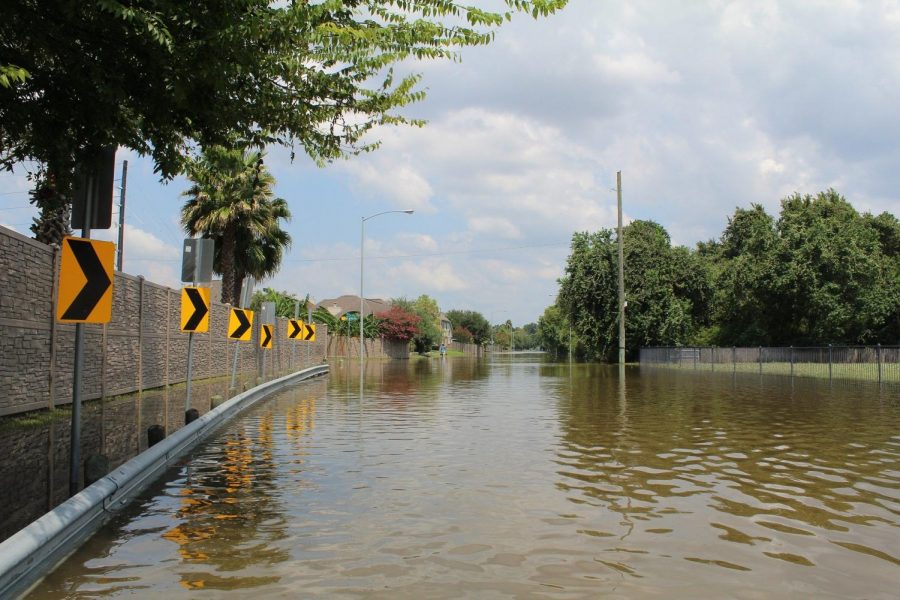Tropical Storm Laura Bumped To Category 4 Hurricane, Makes Landfall
Andrew Shrew
Houston streets were flooded in the aftermath of Hurricane Harvey. Harvey formed quickly, which is becoming more and more common for storms in the superheated gulf.
August 28, 2020
Hurricane Laura, once named Tropical Storm Laura, has shifted from a tropical storm to a Category 4 hurricane. Laura has sustained winds near 150 mph and is traveling northwest at 16 mph. The hurricane is expected to downgrade into a tropical storm over the weekend.
“Laura is the strongest hurricane to hit Louisiana (in terms of wind speed) and also the earliest ‘L’ storm on record,” physical scientist Kara Doran with the USGS St. Petersburg Coastal and Marine Science Center said. “Louisiana and Texas are just starting to dig out and see the damages from Laura. A 10-foot storm surge was observed at Lake Calcasieu, Louisiana overnight.”
Hurricane warnings were issued in Texas and Louisiana on Monday. More than 200,000 people in Southern Louisiana and 400,000 people in Texas were placed under a mandatory evacuation order. Due to COVID-19, many shelters were forced to turn away evacuees. Many people have been forced into hotels, rather than typical shelter spots.
“Due to exceeded demand for safe sheltering options from Hurricane Laura, Austin Area shelters hit capacity around 5:30 a.m. this morning,” Governor Greg Abbott said in a press release. “Those seeking shelter from this weather event are welcome to wait at Circuit of the Americas (COTA) to see when more hotel rooms become available. Once confirmed, shelter rooms will be on a first come first served.”
Rising temperatures in the Gulf of Mexico have been the catalyst for larger more destructive hurricanes. The warm temperatures intensify wind speeds, creating more damage when the storm hits land. This causes states to have less time to prepare and evacuate residents living near the coast.
“One thing we’ve seen in particular— with Harvey in 2017, and Florence and Michael in 2018 and now with Laura— is very rapid intensification, wherein the storm strengthens from a tropical storm to major hurricane status in less than a day,” climate scientist Michael Mann said to CNBC. “Such rapid intensification happens over very warm waters like we’ve seen in the tropical Atlantic and Gulf in recent years, and right now large parts of the Gulf are bathtub-level hot.”
Taylor Therwhanger, a teacher at Timpson Elementary School, located in the Houston area said that her school district had called off school for the day. Her family is currently safe at home but are taking safety precautions. She expects the storm to last over the weekend.
“We’re getting hit pretty hard,” Ms. Therwhanger said. “We’re fortunate enough to have a roof over our heads and food to last us through the week. My mother-in-law’s neighborhood is currently under flood watch so we’re being safe and having her stay with us.”
Hurricane Laura hit Texas and Louisiana on Thursday, Aug. 27 with intense flooding from four to eight inches. Tornadoes are expected to be generated over Louisiana, Texas, and Mississippi. The National Weather Service has predicted that power outages will last weeks to possibly months. Mr. Abbott has ordered more than 70 members within the Texas Army, Air National Guards, and Texas State Guard to respond to emergencies when needed.



